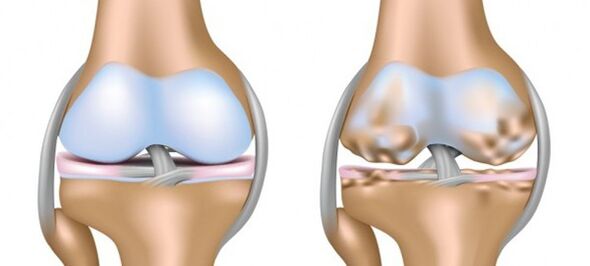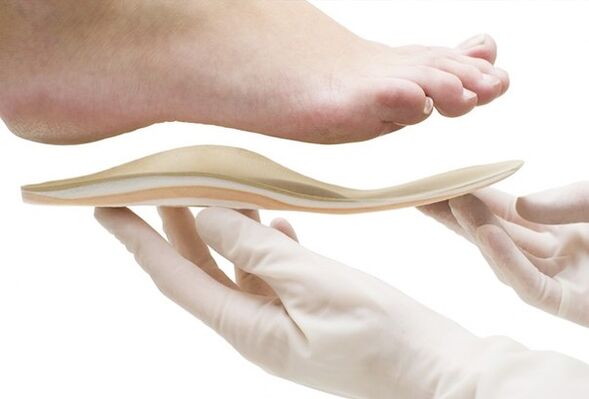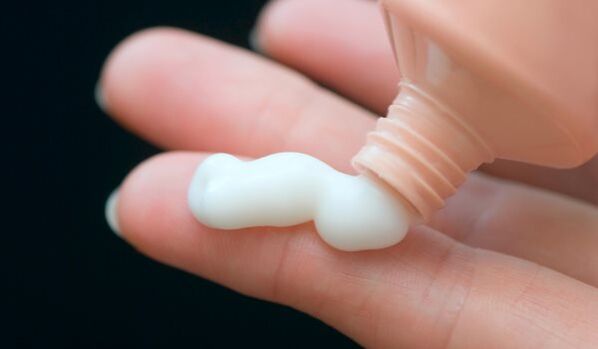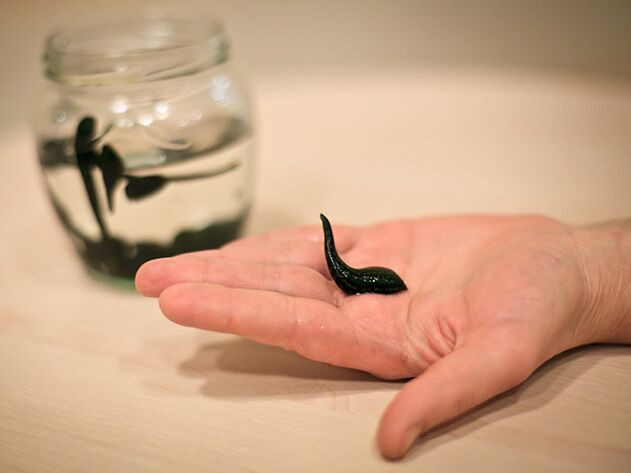The knee joint is formed by the movable tibia and femur "in series".The patella prevents it from shifting laterally, and an elastic layer of durable cartilage tissue ensures easy glide.
“Healthy” cartilage thickness on the articular surface of the knee joint is 5-6 mm.

This is enough to soften the mechanical friction of the bone and absorb "impact" loads.A disease that causes the destruction of natural shock-absorbing tissues and deformation of joints - knee arthrosis or knee arthrosis, has unpleasant symptoms and its treatment is often difficult because the bone structure initiates compensatory mechanisms.
What triggers this disease?
There is a belief that knee arthropathy is the result of "salt deposits."However, calcification, or the deposition of calcium salts in the knee ligaments, has no independent significance and is more of a result than a cause.
What is knee joint disease and how is it treated?
In fact, the "starting point" should be considered the violation of the blood supply of the small bone vessels and its consequences - the difficulty of nutrition of the cartilage tissue and its depletion.The hyaline cartilage then deforms.The latter is spalled and covered with multidirectional cracks.The synovial fluid becomes more viscous and loses its properties as a natural "moisturizer" for cartilage tissue.
The complete disappearance of the dry "shock absorber" can be called the end of the pathological process.
However, the underlying bone that loses the cartilage "cover" compensates for the loss by growing along the perimeter and being covered in "spikes" (bone growth).In this case, the knee joint becomes deformed and the leg takes an X- or O-shape, so this pathology is also called knee deformity osteoarthritis (hereinafter referred to as DOA).
What are the causes of knee arthritis?
- Aging of the body and the consequent “wear and tear” on the joints;
- Being overweight;
- Extreme loads on the knee joint (athletes);
- The knee was injured and a bone was broken;
- meniscus removal;
- Untreated arthritis, rheumatism;
- abnormal position of joint bone components;
- The endocrine system "fails", hormonal imbalances occur, and metabolic imbalances occur.
Arthritis is often confused with various forms of arthritis.
However, the difference between arthritis and knee joint disease is that in the former, multiple pathogens often invade the body and "cause" systemic inflammatory diseases.
Sometimes the signs of arthritis—inflammation and swelling of the joints, swelling, and pain that gets worse at night—are the result of the immune system "deploying" active defenses against the body's own cells.
Arthropathy is a purely localized disease that often becomes a logical continuation of arthritis or the result of gradual "wear and tear" of the joints.
Primary and secondary knee arthropathy
In orthopedics and traumatology, types of arthropathy of the knee are often distinguished based on the cause of the degenerative changes in the articular cartilage.
- Age-related or primary knee arthropathyKnee joints often disrupt the relatively painless process of aging due to physical "wear and tear" of cartilage tissue.Women over 40 are more likely to develop the disease than men.The early development of primary knee disease threatens athletes and people who are overweight;
- secondary knee arthropathy– The logical continuation of a previous injury or the consequences of untimely treatment of inflammatory diseases, which can occur at any age.

Where does the disease hide?
Progressive knee joint disease is localized to the inside of the knee joint.However, the disease may "lurk" between the patellar and femoral surfaces.
- Left-sided knee joint disease often affects athletes and overweight people;
- People whose occupational or sporting activities involve excessive dynamic or static loads on the right leg are more likely to experience degenerative changes in the cartilage layer of the right knee joint;
- Bilateral knee arthritis is often age-related.Regardless of the cause, uncontrolled destruction of both knee joints will result in disability in most cases.
Ouch, it hurts!
The symptoms of knee osteoarthritis are fairly vague in the early stages, and not many people rush to see a rheumatologist or joint specialist when they experience knee pain after a long hike.
After all, a short break and relaxation can relieve the uncomfortable symptoms of a slight "crunching" of the knees, giving a questionable feeling of good health.
In fact, the "vague" symptoms of the first stages of degenerative diseases of the musculoskeletal system make timely detection and treatment extremely difficult.Deformed knees are no exception.
- The first stage of knee joint disease manifests only as mild discomfort caused by fatigue in the limbs and is extremely difficult to recognize on your own.Dumb pain in your knees and the "crunching" sound of rough cartilage sticking to each other often prompts you to see your doctor promptly;
- Second-degree knee arthrosis sets the stage for deformation of the knee joint and prevents its movement in the morning, leading to the need for "bifurcation".Severe, persistent pain that occurs after standing or sitting for long periods of time.Knee mobility is somewhat limited and accompanied by a crunching sound;
- The greatest symptoms of knee arthritis appear in the third stage of the disease.The knee swells, the local temperature increases, and pain is often felt at rest.
Movement of the joint is hindered by acute pain caused by "joint rats" (growing fragments of fractures).
A deformed joint loses stability and becomes difficult to move.Advanced disease at this stage requires prosthetics.
Can knee osteoarthritis be cured?
The well-known saying “rest is not an end in itself but a means to an end” is directly relevant to those facing the early manifestations of the disease.Rest ensures that the load on the knee joint is minimized during an exacerbation of the condition.For the same purpose, separate orthopedic insoles are recommended.

Using a separate orthotic insole will ensure that the pressure on the knee joint is minimized.
One insurance against this disease, or rather against its worsening, are special orthotics that support the stability of the athlete's "loose" knee joint.
Canes can help older adults "lighten" the load on their joints while walking.But the measures listed are more likely to prevent knee arthritis.If such a "vaccine" does not help, and the joint disease worsens and manifests itself in inflammation and pain, you should rush to see an orthopedic or joint specialist.
How to treat knee joint disease?
- Stage one.Suppresses inflammation and accompanying pain.NSAIDs taken by mouth, intramuscularly, or intravenously best address "acute" problems.NSAIDs "sealed" in rectal suppositories will have long-term effects.
The use of corticosteroids is also justified - they are "delivered" directly to the diseased joint.
Topical application of an ointment or gel containing active anti-inflammatory ingredients will help enhance the anti-inflammatory effects of internal NSAIDs.The latter helps relieve swelling quickly.

Drugs that reduce vascular muscle tone are often used with NSAIDs.This improves blood flow around the joints.
For example, NSAIDs and painkillers are dangerous for patients with gastrointestinal problems, but what about arthritis in the knee?
Oxygen therapy would be a good option.
- The second stage."Nourish" dry cartilage with substances that stimulate collagen synthesis.Chondroprotectants used for this purpose act slowly, but long-term use stimulates the synthesis of the natural components of the cartilage matrix.Maximum effect is obtained by intra-articular administration.
- The third stage.We eliminate cartilage "roughness" and reduce cartilage friction by introducing hyaluronic acid.
- The fourth stage.We use physical therapy to improve blood supply and nutrition to the joints.For this reason, it is recommended to combine business and leisure with a health resort-style treatment.
- The fifth stage.We turned to unconventional treatments: acupuncture, leech therapy, apitherapy.One innovation in the treatment of DOA in the knee is the intra-articular injection of Orthokine, a serum derived from a patient's blood proteins.


Which exercises are correct?
Physical therapy will help slow the progressive destruction of joint elements.Its main goals:
- Improves the blood supply to the joints and activates the nutritional action of all its components;
- Increase knee mobility;
- Improves the tone of all muscles in the human body.
It is recommended that physical therapy sessions, at least initially, be conducted under the supervision of a physical therapy instructor.An experienced trainer will select exercises that correspond to the level of joint mobility, excluding high range exercises and exercises with excessive axial load - all of which can damage the soft tissue of the joint and worsen the patient's condition.
Green Pharmacy Recipes: There are many options!
Providing knee joint disease and treatment using traditional methods:
- Option 1.Grind 120g garlic, 250g celery root and 3 lemons in a meat grinder.Place the mixture into a 3-liter jar and pour boiling water to the top.After leaving the composition in a warm place overnight, wrap the jar and start taking it in the morning, taking 70 grams of the drug every morning.Gradually increase intake to 3 times;
- Option 2.Treat painful joints with 1 tablespoon of the mixture.l. honey and 3 tbsp.lake apple cider vinegar.Arrange fresh cabbage leaves (lightly tap off with a knife) or burdock (shallow side towards the seams) on top.Wrap your legs in cellophane wrap and a soft scarf.Do it at night, up to 30 procedures.

inevitable decision
Often, severe pain and joint dysfunction lead to disability.
Then middle-aged patients as well as young people diagnosed with knee arthritis require surgical treatment.
The most common surgery is endoprosthesis.This surgery lasts no more than an hour and has the effect of allowing the "restored" limb to function pain-free for at least 20 years.After a while, a "loose" prosthesis will have to be replaced.






















